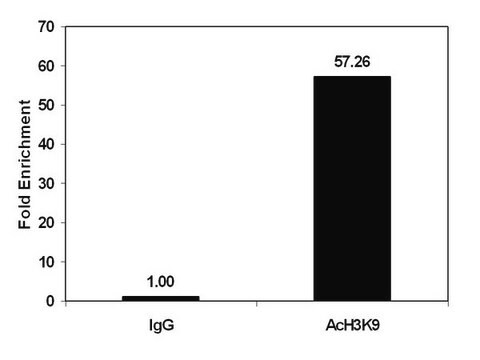294837
Cloruro de hidrógeno solution
1.0 M in diethyl ether
Iniciar sesiónpara Ver la Fijación de precios por contrato y de la organización
About This Item
Fórmula empírica (notación de Hill):
HCl
Número de CAS:
Peso molecular:
36.46
Número MDL:
Código UNSPSC:
12352301
ID de la sustancia en PubChem:
NACRES:
NA.21
Productos recomendados
Formulario
liquid
Nivel de calidad
concentración
0.95-1.10 M (with NaOH, titration)
1.0 M in diethyl ether
densidad
0.731 g/mL at 25 °C
temp. de almacenamiento
2-8°C
cadena SMILES
Cl
InChI
1S/ClH/h1H
Clave InChI
VEXZGXHMUGYJMC-UHFFFAOYSA-N
¿Está buscando productos similares? Visita Guía de comparación de productos
Categorías relacionadas
Descripción general
Hydrogen chloride solution (1.0 M in diethyl ether) is generally prepared by passing HCl gas through diethyl ether solvent. It is suitable for air/moisture-sensitive reactions.
Aplicación
Hydrogen chloride solution (1.0 M in diethyl ether) can be used in the synthesis of molybdenum adamantylimido and t-butylimido alkylidene chloride complexes in the presence of PPh2Me. It is also used in some cyclization reactions, for example, in the cyclization of oxadiazole derivatives from corresponding thiosemicarbazides.
Palabra de señalización
Danger
Frases de peligro
Consejos de prudencia
Clasificaciones de peligro
Acute Tox. 4 Oral - Flam. Liq. 2 - Met. Corr. 1 - STOT SE 3
Órganos de actuación
Central nervous system
Riesgos supl.
Código de clase de almacenamiento
3 - Flammable liquids
Clase de riesgo para el agua (WGK)
WGK 1
Punto de inflamabilidad (°F)
-40.0 °F - closed cup
Punto de inflamabilidad (°C)
-40 °C - closed cup
Elija entre una de las versiones más recientes:
¿Ya tiene este producto?
Encuentre la documentación para los productos que ha comprado recientemente en la Biblioteca de documentos.
Los clientes también vieron
Jay G Hosking et al.
Neuropsychopharmacology : official publication of the American College of Neuropsychopharmacology, 40(4), 1005-1015 (2014-10-21)
Successful decision making often requires weighing a given option's costs against its associated benefits, an ability that appears perturbed in virtually every severe mental illness. Animal models of such cost/benefit decision making overwhelmingly implicate mesolimbic dopamine in our willingness to
Mahsa Sadeghi et al.
British journal of pharmacology, 172(2), 460-468 (2014-01-01)
Tapentadol is a novel analgesic that combines moderate μ-opioid receptor agonism and noradrenaline reuptake inhibition in a single molecule. Both mechanisms of action are involved in producing analgesia; however, the potency and efficacy of tapentadol in individual neurons has not
Ann Brinkmalm et al.
Molecular neurodegeneration, 9, 53-53 (2014-11-25)
Synaptic degeneration is an early pathogenic event in Alzheimer's disease, associated with cognitive impairment and disease progression. Cerebrospinal fluid biomarkers reflecting synaptic integrity would be highly valuable tools to monitor synaptic degeneration directly in patients. We previously showed that synaptic
Xuan Zhang et al.
Nanomedicine : nanotechnology, biology, and medicine, 11(6), 1365-1375 (2015-04-19)
Intratumoral injection of ultra-small gold nanoparticles (AuNPs) conjugated to doxorubicin (Au-Dox) is effective against both murine B16 and human SK-MEL-28 tumors in mice. Au-Dox suppresses growth of B16 tumors in immunocompetent mice by >70% for at least 19 days. In
Luis J Cruz et al.
Molecular pharmaceutics, 11(12), 4299-4313 (2014-10-08)
Dendritic cells (DCs) are the most potent antigen-presenting cells (APCs), involved in the induction of immunity and currently exploited for antitumor immunotherapies. An optimized noninvasive imaging modality capable of determining and quantifying DC-targeted nanoparticle (NP) trajectories could provide valuable information
Nuestro equipo de científicos tiene experiencia en todas las áreas de investigación: Ciencias de la vida, Ciencia de los materiales, Síntesis química, Cromatografía, Analítica y muchas otras.
Póngase en contacto con el Servicio técnico





